How “A Quiet Place: Day One” Production Designer Simon Bowles Harnessed VR to Unleash Aliens on NYC
When John Krasinki released A Quiet Place in 2018, the sonically immersive horror film made audiences hold their breath. Three years later, he followed the success of that film with an expansive sequel that saw the surviving members of the Abbott family run from their rural home in Part II. Now, we witness how the dystopian events started in A Quiet Place: Day One, which sees Michael Sarnoski (Pig) take over directing duties and Krasinski staying on to produce.
The third chapter follows the cat-loving Samira (Lupita Nyong’o) and a stranger named Eric (Joseph Quinn), who together, travel across New York fighting to survive the cataclysmic alien invasion. While the backdrop is set in the Big Apple, production actually took place in London. Tasked with meticulously recreating the New York neighborhoods from across the pond was production designer Simon Bowles (The Son). “I’m so proud of this project,” Bowles tells The Credits over a video call before its June 28 release. “There are so many kinds of little beats you’ll find when you watch the film.”
The small details in the designs were the sticking point for Bowles, who artfully grounds the culturally diverse neighborhoods of New York’s Chinatown, Harlem, the Lower East Side, and the Upper East Side. The collaboration among Sarnoski, cinematographer Pat Scola, and costume designer Bex Crofton-Atkins drove the authentic visual flair in prep. “Michael and Pat have a relationship, having made Pig together, so when Pat came in, he brought his own ideas and suggestions that we integrated. And then, when Bex arrived, that was another layer. She brought some fantastic costume ideas and colors for Samira and Eric and the rest of the characters,” notes Bowles.
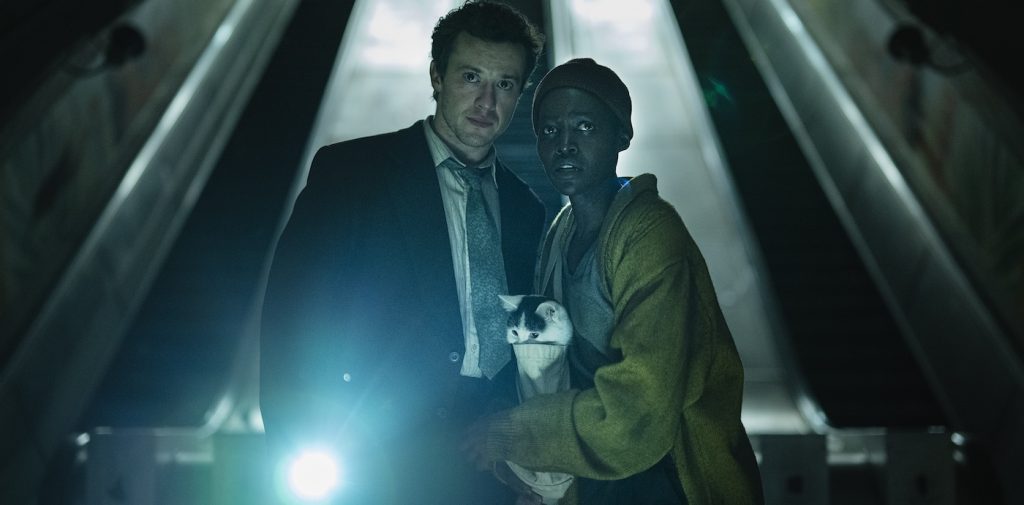
Color became an important touchstone in developing the aesthetic. “We wanted to agree on things like color and how we approached the grade in each of the sequences since there’s no point in doing really specific details if the grade gets cranked over everything. We wanted to shoot and grade as we went. And that made it such a joy to watch the rushes because we could really see the movie coming together.”
Below, find out how the production designer used virtual reality to prepare for the enormous undertaking of creating New York at soundstages in London and various locations like Canary Wharf, Shoreditch Town Hall, and the Woolwich Dockyard.
This is your first project with Michael, right?
That’s right, which is fantastic because when learning a new director, there’s always a honeymoon period. It’s wonderful.
Did Michael talk about any guiding light or themes in terms of the production design?
One of the first things we did was that Michael and I met in New York and took the journey these characters take. We physically walked through the city and absorbed the neighborhoods in which each of the movie’s beats takes place. To me, it was very important to create an atmosphere that any New Yorker would recognize since this was shot in London. It was important for everybody to believe they were in New York and to see specific stores and specific people instead of just shooting random sets with destruction.
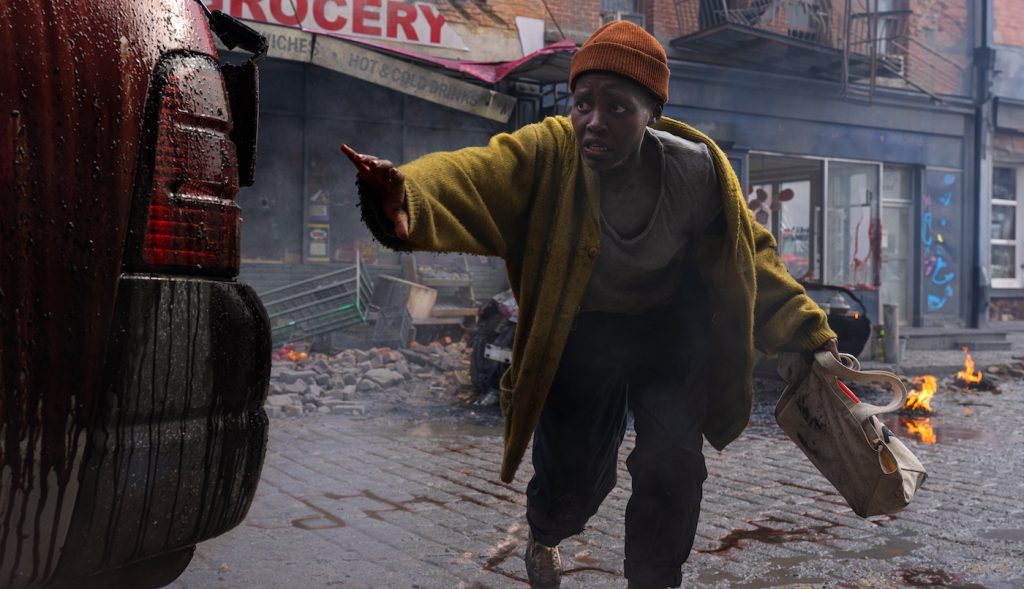
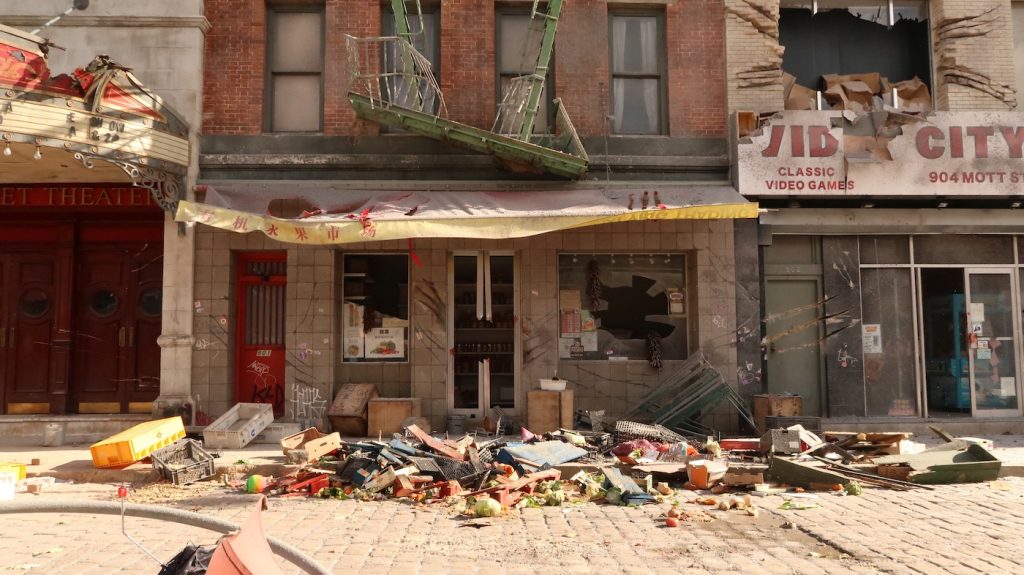
Speaking of destruction, how did you approach that intense alien event that opens the film?
I started designing the set that we were going to build. It’s a four-block set of New York, and I built it layered, so when you first walk on the set, it’s Chinatown – it has absolutely every detail down to the graffiti style. All that New York research was put into those details so you are 100% on that street. Then, my small team built the environment in 3D. Not only designing the buildings but also everything on the four-block set. Things like what was on the roof, people’s chairs, the laundry, and we did so two stories high, so when you’re looking up, you can see all those elements and feel all of it.
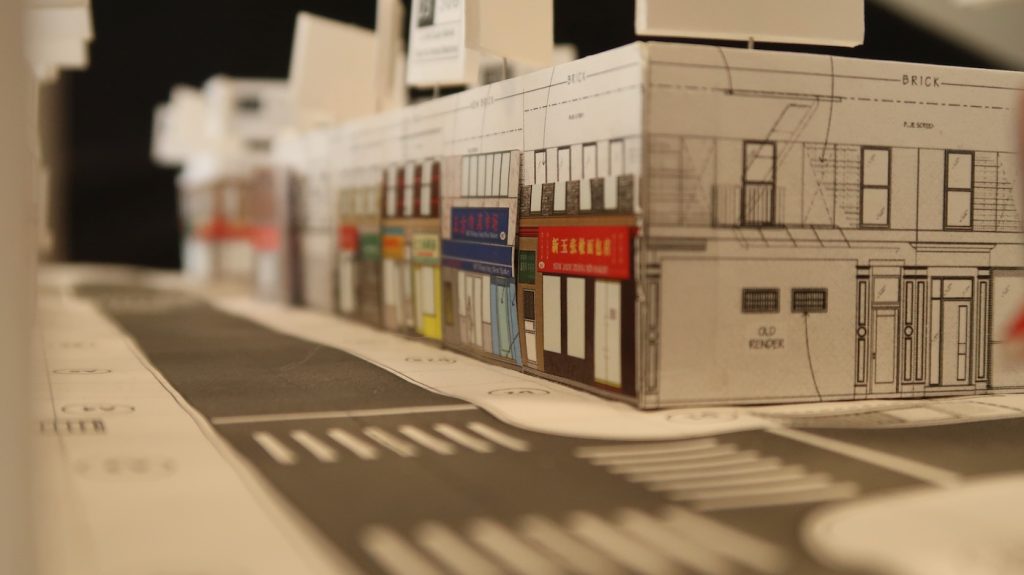
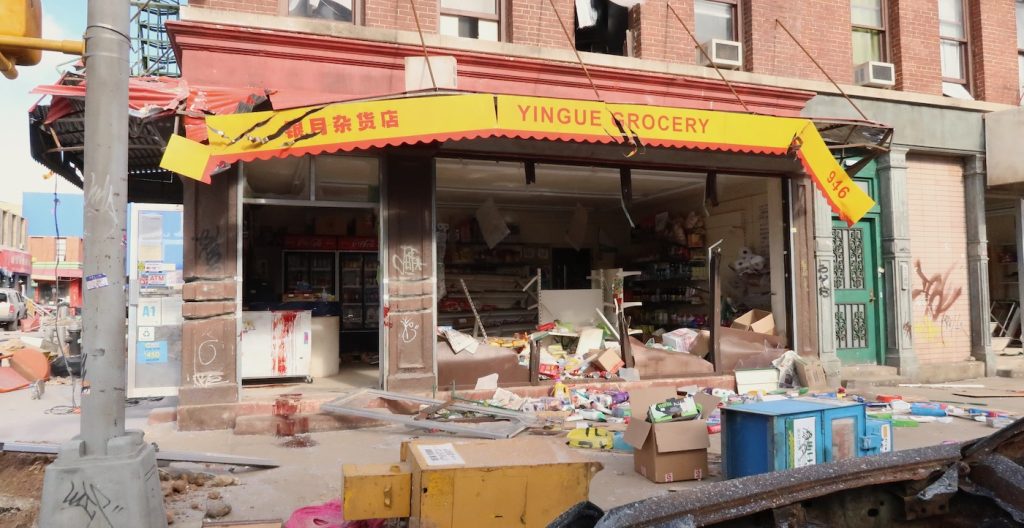
By 3D model, you mean a digital version rather than a practical miniature?
Yes. We then took that 3D model and put it into virtual reality.
That’s kind of like the visual effects version of previs for production design.
Exactly. This was all very early on, before we had a visual effects team or a construction department. We could put Michael into the virtual world with a virtual reality helmet and he could walk through the set. We also had a controller so he could turn on or off the set extensions. Then another button to reveal all the vehicles and the people walking around. And he could also adjust the sunlight which later on our cinematographer Pat Scola added the camera into the virtual reality so he could start choosing lenses and lining that up on set.
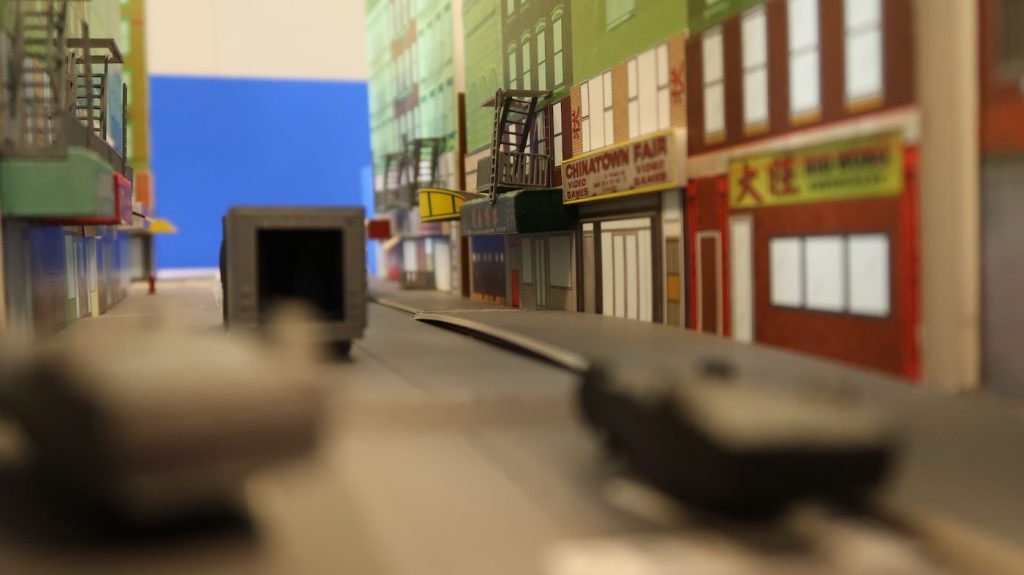
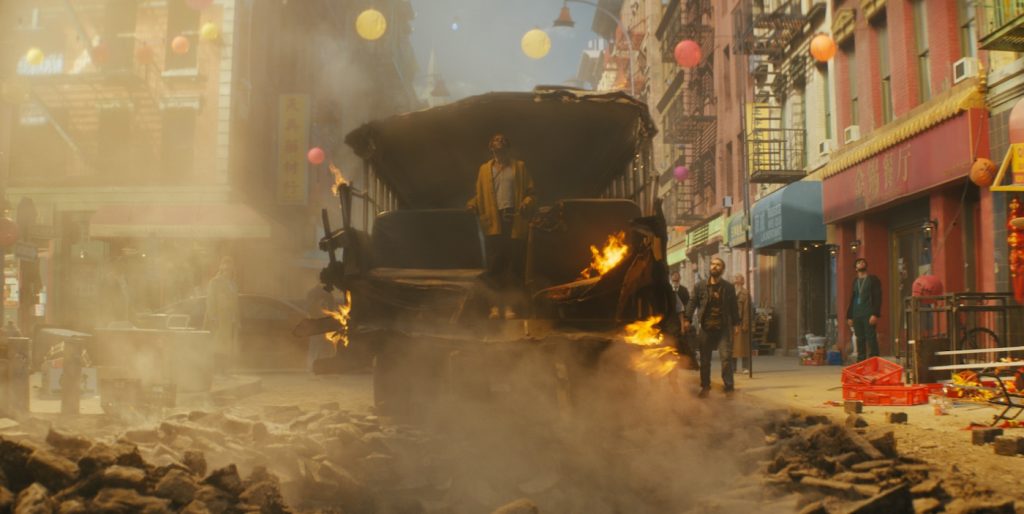
That workflow seems very helpful to visualize everything.
It is a fantastic tool to drop a director into the set and have those discussions. Having the ability and freedom to understand everything is invaluable. The great thing about it is that we have all the information for the set extensions for visual effects, which was done beautifully by ILM [Industrial Light & Magic]. Not just vertically but also horizontally off in the distance.
After the alien event, we travel through these different New York neighborhoods. What research did you bring back to London for the designs?
We wanted to represent each of New York’s neighborhoods honestly and find the heart of each neighborhood. For Chinatown, we chose Mott Street and spent a lot of time hanging out there, chatting and photographing things. We photographed anything that was noisy, which we thought would be great for the dressing and the environment. Like trash guys pushing those big trash containers on wheels. Or the guys playing instruments, busking on the streets. There’s also an arcade on Mott Street with these old games. I was really interested in that because all these things are brilliant to be shown before and after the event. It becomes so silent and fantastic.
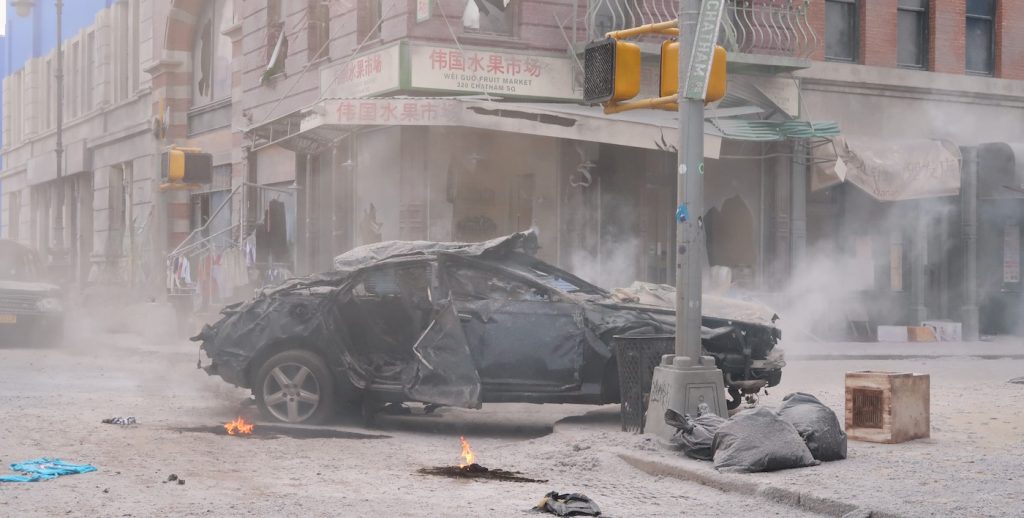
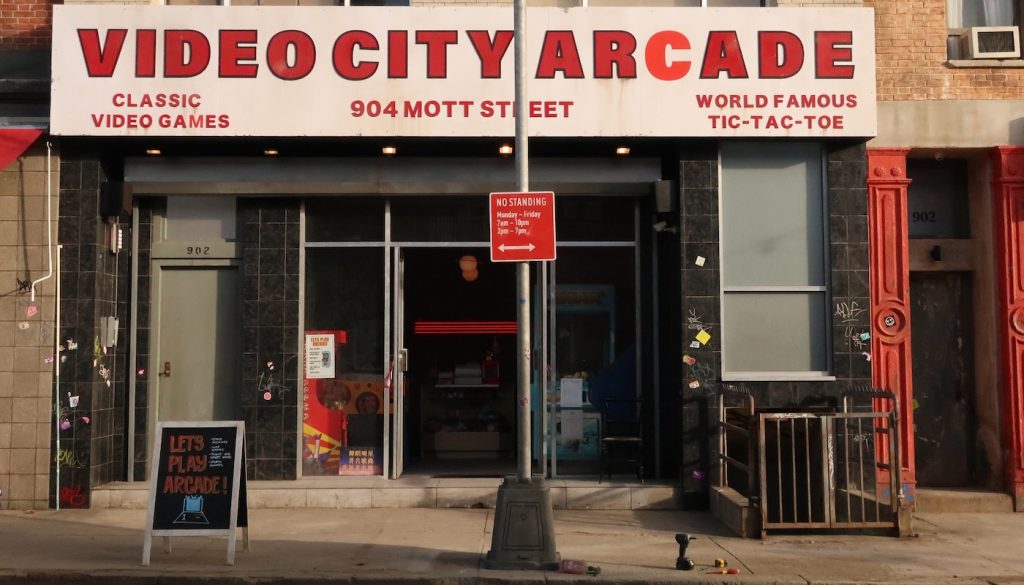
I believe there’s a shot of Samira walking past that arcade in the movie.
Yes, we got her walking past the noisy arcade store and again after the event. So we chose to be inside the arcade, and all the machines are silent, and there are no lights flashing anymore. She’s just walking past, and then the glass windows of the store are all smashed and blood-smeared. It’s those little beats that make a difference.
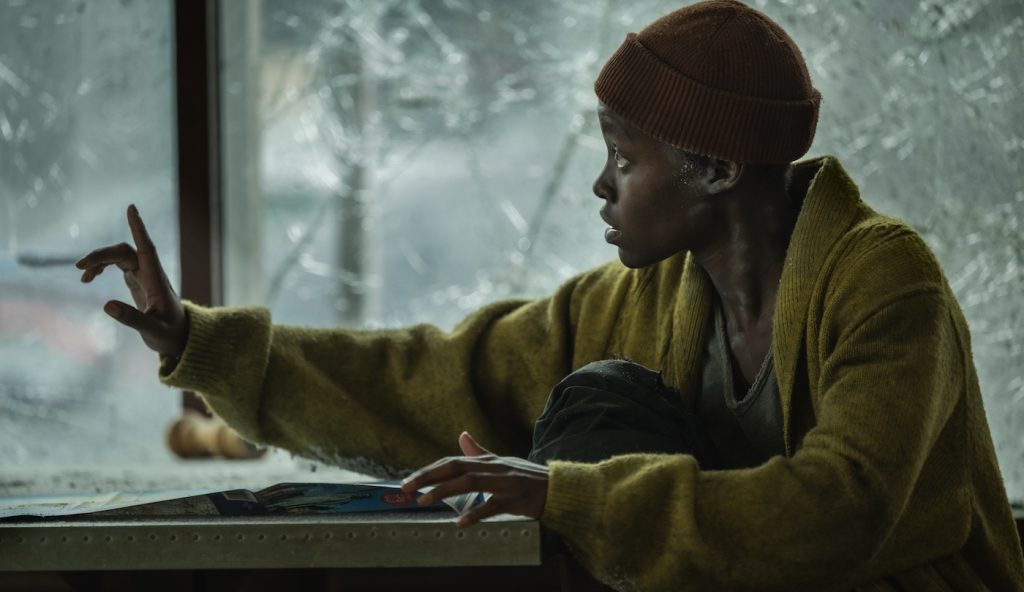
One of the death-defying moments for Samira is in a tunnel where the water starts to rise. How did you approach that practically?
I designed the movie The Descent, which was set in a cave. What I learned from that is that it’s really difficult to do a tunnel. It doesn’t matter how much space you have on a stage; if it’s meant to be a long tunnel, it is very difficult. In this situation, we had a very long straight tunnel. We had a 60-foot tunnel, but it was never enough, so it needed to be extended off into the distance in both directions.
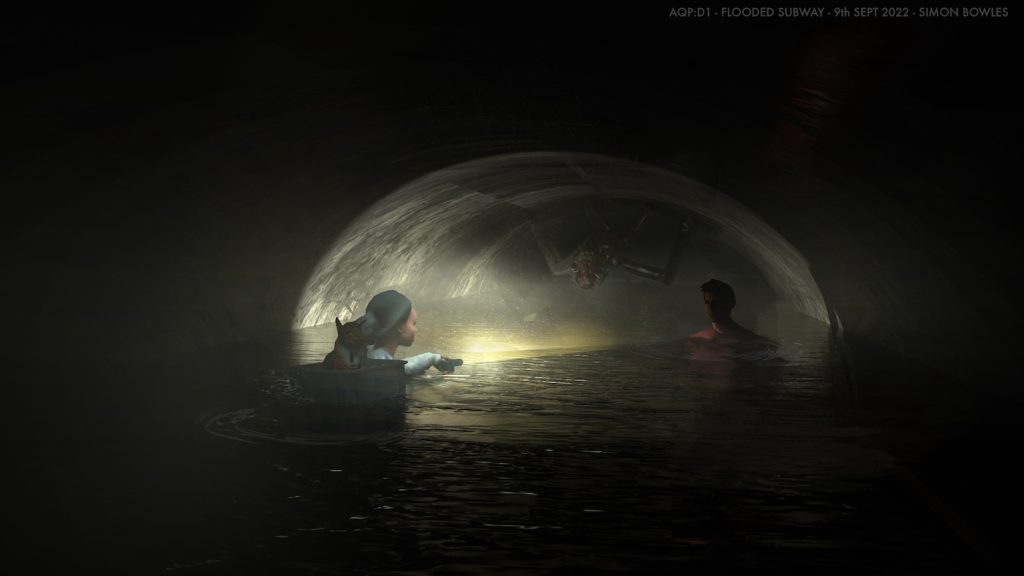
So when you have two people floating down through the water in the tunnel, it’s more exciting to shoot them looking down it. So, as the water levels rise, it’s much easier to lower the ceiling than raise the water because the actors get used to the fact that they can touch the pool floor. And the crew is all set up with the lighting. So we put the ceiling on motor hoists, and it gets lower and lower until the water level is near the ceiling, and the characters are trying to suck that last bit of air out.
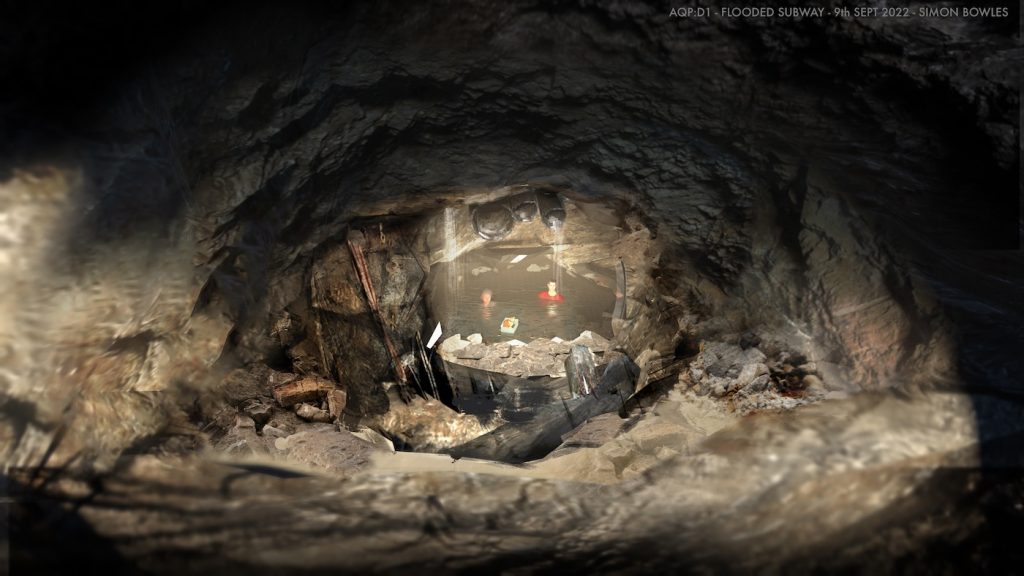
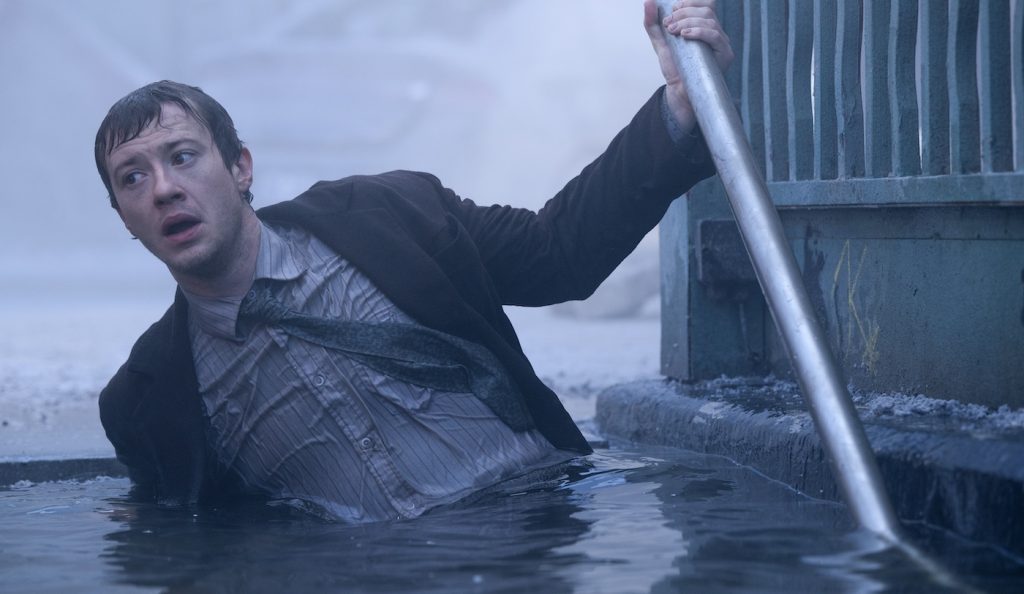
Besides the action, one of the stark differences between this film and the previous two is the color palette. New York brings some of that, but what did you have in mind to treat the film?
The first two movies were beautiful in that they were out in the open. There were trees, fields, and long grasses, and you were trapped in this huge environment. The thing about this movie is that we’re in a totally opposite environment. We’re in a city where everything is close, and you can’t get away from anything. So, color-wise, it was very important that we did a mood board for each of the neighborhoods.
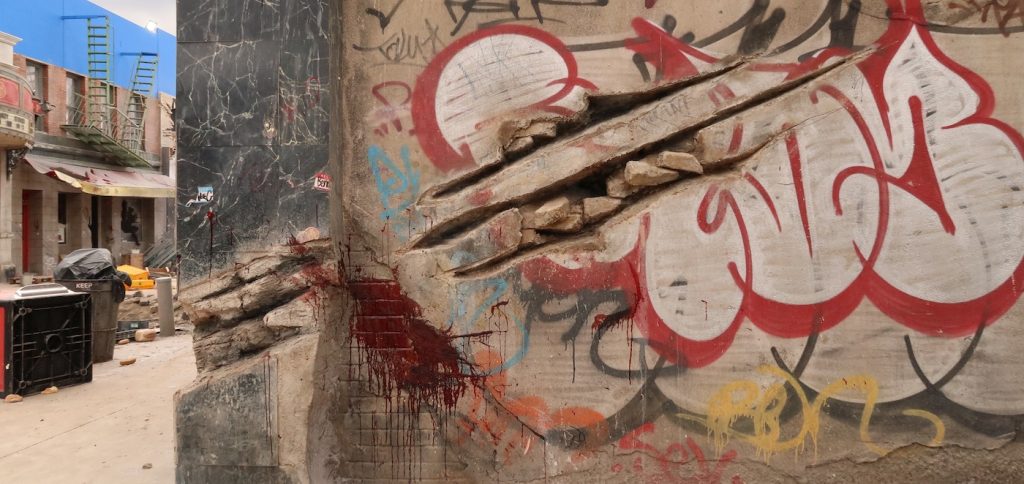
The movie starts in Chinatown, which has such a clear, wonderful color palette – the reds, the golds, and the greens. Then we started to get some Lower East Side with neon colors in the storefronts and the graffiti and the posters. Even small things, like the cycle lanes on the streets, are not in the Chinatown palette. When we get to East Midtown that’s all glass and blue and just a whole other color and texture palette. And then, the Upper East Side and up in East Harlem which had its own look.
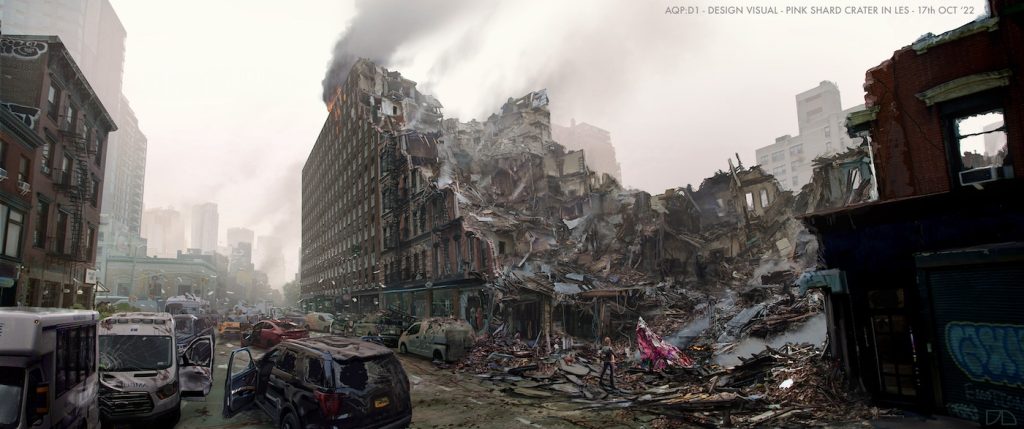
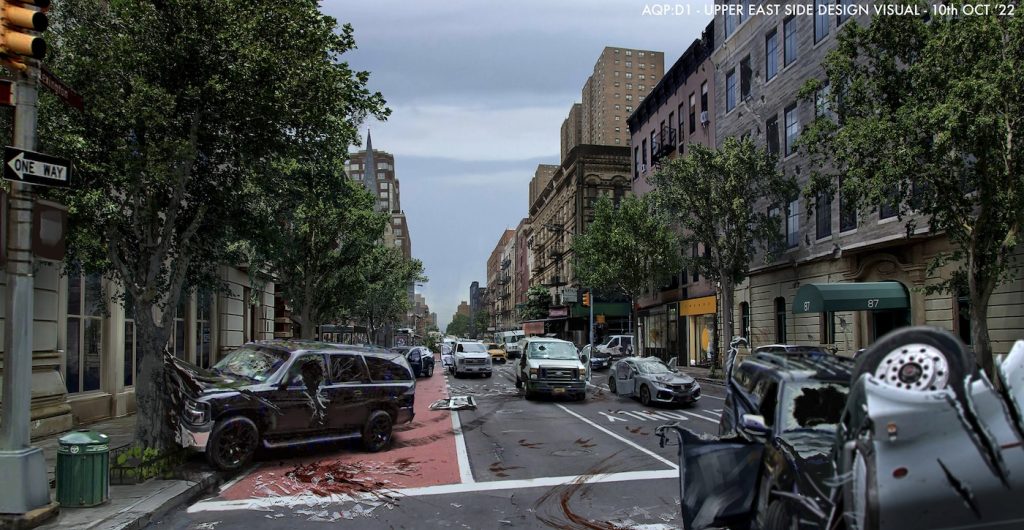
Each neighborhood design is so rich that it’s hard to believe it wasn’t shot in New York.
It was less of a sense of color and more aging and layering. Understanding the history and the pride in each community. Taking that whole journey through these different colors and textures and telling those little stories, we treated each like a little separate movie.
A Quiet Place: Day One is in theaters now.
Featured image: Joseph Quinn as “Eric” and Lupita Nyong’o as “Samira” in A Quiet Place: Day One from Paramount Pictures.



